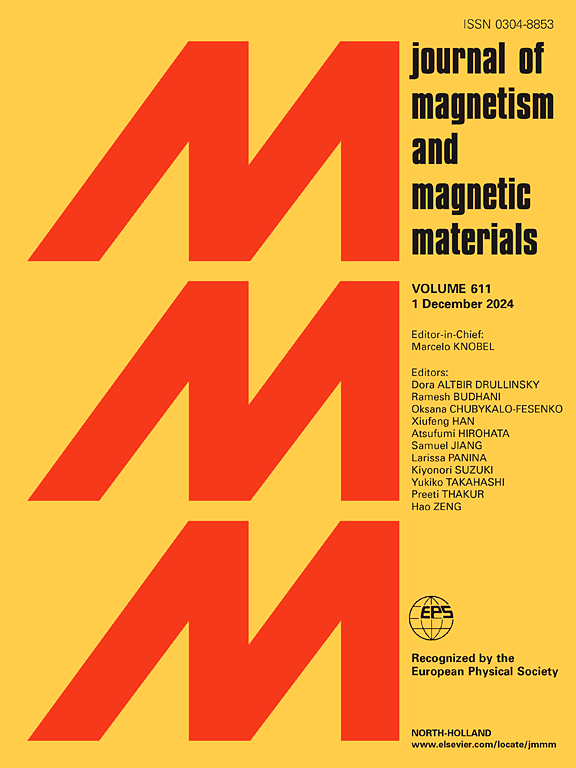基于单层CoPt自旋轨道转矩装置的声像交叉模态学习与生成设计
IF 2.5
3区 材料科学
Q3 MATERIALS SCIENCE, MULTIDISCIPLINARY
引用次数: 0
摘要
尽管利用自旋轨道转矩(SOT)装置的神经网络应用取得了显著成就,但目前的研究主要集中在单模态分类任务上,而跨模态学习任务往往存在生成质量欠佳的问题。为了解决这一限制,我们采用基于CoPt-SOT的生成对抗网络(GANs)来实现从语音到手写数字图像的跨模态学习和生成。首先,我们探索单层CoPt器件的无场开关特性,开发基于自旋的缩放整流线性单元(SReLu), Sigmoid和Tanh神经元函数的实现。同时,我们利用CoPt器件的非易失性多态特性来实现兴奋-抑制性突触可塑性。随后,我们首次使用这些基于自旋的神经元和突触构建了半自旋和全自旋GAN网络,实现了语音和图像域之间的跨模态学习和生成。最后,我们通过手写数字识别任务评估了这些网络的性能,半自旋和全自旋实现的识别准确率分别达到了93.78%和88.61%。值得注意的是,这项工作克服了SOT器件应用中的现有瓶颈,这些瓶颈主要局限于单模分类任务,并展示了扩大SOT技术范围的巨大潜力。本文章由计算机程序翻译,如有差异,请以英文原文为准。
Design of audio to image cross-modal learning and generation based on single-layer CoPt spin-orbit torque devices
Despite remarkable achievements in neural network applications using spin–orbit torque (SOT) devices, current research predominantly focuses on unimodal classification tasks, while cross-modal learning tasks often suffer from suboptimal generation quality. To address this limitation, we employ generative adversarial networks (GANs) based on CoPt-SOT to achieve cross-modal learning and generation from speech to handwritten digit images. Initially, we explore the field-free switching characteristics of single-layer CoPt devices, developing spin-based implementations of Scaled Rectified Linear Unit (SReLu), Sigmoid, and Tanh neuronal functions. Simultaneously, we leverage the nonvolatile multistate characteristics of CoPt devices to realize excitatory-inhibitory synaptic plasticity. Subsequently, for the first time, we construct half-spin and full-spin GAN networks using these spin-based neurons and synapses, enabling cross-modal learning and generation between speech and image domains. Finally, we evaluate the performance of these networks through handwritten digit recognition tasks, achieving impressive recognition accuracies of 93.78 % and 88.61 % for half-spin and full-spin implementations, respectively. Notably, this work overcomes the existing bottleneck in SOT device applications, which have been largely confined to unimodal classification tasks, and demonstrates significant potential for expanding the scope of SOT-based technologies.
求助全文
通过发布文献求助,成功后即可免费获取论文全文。
去求助
来源期刊

Journal of Magnetism and Magnetic Materials
物理-材料科学:综合
CiteScore
5.30
自引率
11.10%
发文量
1149
审稿时长
59 days
期刊介绍:
The Journal of Magnetism and Magnetic Materials provides an important forum for the disclosure and discussion of original contributions covering the whole spectrum of topics, from basic magnetism to the technology and applications of magnetic materials. The journal encourages greater interaction between the basic and applied sub-disciplines of magnetism with comprehensive review articles, in addition to full-length contributions. In addition, other categories of contributions are welcome, including Critical Focused issues, Current Perspectives and Outreach to the General Public.
Main Categories:
Full-length articles:
Technically original research documents that report results of value to the communities that comprise the journal audience. The link between chemical, structural and microstructural properties on the one hand and magnetic properties on the other hand are encouraged.
In addition to general topics covering all areas of magnetism and magnetic materials, the full-length articles also include three sub-sections, focusing on Nanomagnetism, Spintronics and Applications.
The sub-section on Nanomagnetism contains articles on magnetic nanoparticles, nanowires, thin films, 2D materials and other nanoscale magnetic materials and their applications.
The sub-section on Spintronics contains articles on magnetoresistance, magnetoimpedance, magneto-optical phenomena, Micro-Electro-Mechanical Systems (MEMS), and other topics related to spin current control and magneto-transport phenomena. The sub-section on Applications display papers that focus on applications of magnetic materials. The applications need to show a connection to magnetism.
Review articles:
Review articles organize, clarify, and summarize existing major works in the areas covered by the Journal and provide comprehensive citations to the full spectrum of relevant literature.
 求助内容:
求助内容: 应助结果提醒方式:
应助结果提醒方式:


